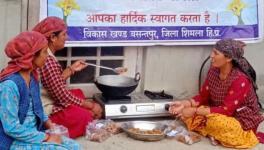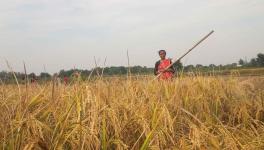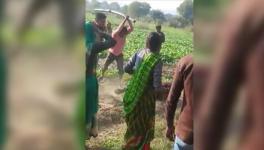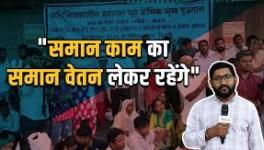MP:Mission Mausam Faces Roadblock; Digital Gaps, Jargon Keep Weather Forecasts From Farmers
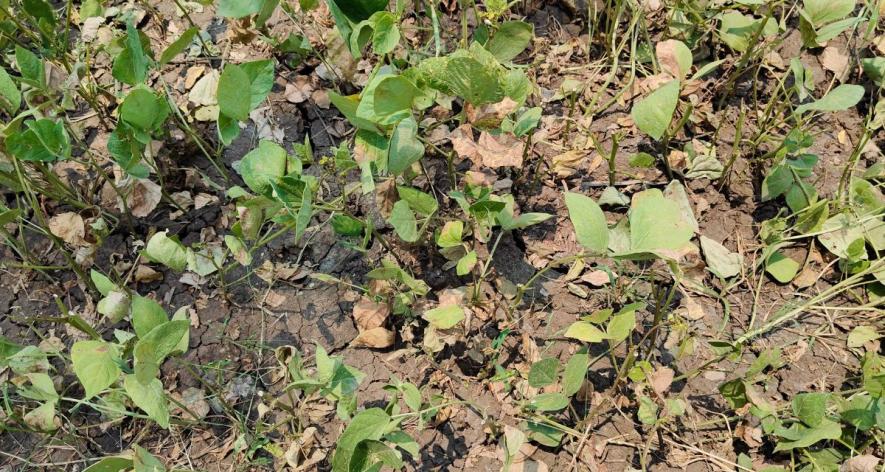
Moong crop damages in Bhopal (Photo - Sanavver Shafi, 101Reporters).
Bhopal, Madhya Pradesh: When unseasonal rains hit Dhamra village in Madhya Pradesh’s Bhopal district this May, Prahlad Kushwaha’s (45) moong crop (green gram) was nearly ready. But just as he began preparing for harvest, heavy rain and pest attacks damaged most of it.
“I had invested Rs 12,000,” he said. “The rain destroyed everything. If we had known it was coming, maybe we could have harvested our crop earlier.”
Kushwaha’s loss is part of a larger trend. This year, moong was grown on around 14.35 lakh hectares across Madhya Pradesh, with nearly 12 lakh hectares under the zaid (summer) crop. But delays in sowing—caused largely by a late wheat harvest—combined with sudden weather disruptions in May, including hailstorms and pest attacks like yellow mosaic virus and whitefly, have significantly reduced yields. In major moong-producing districts such as Harda, Khandwa, Bhopal, Sehore, and Narsinghpur, farmers and agriculture officials estimate crop losses between 30% and 45 %.
Ram Swaroop, a farmer from Khirkiya village in Harda, said a hailstorm on May 10 left him with barely anything to sell. “Traders are offering only Rs 5,500 per quintal,” he said—far below the Rs 8,768 per quintal Minimum Support Price (MSP) set for moong for the 2025–26 season. In Narsinghpur, a farmer who harvested 90 quintals from 16 acres was offered just Rs 6,000 per quintal due to poor grain quality.
For them, the changing climate has made one thing clear: timely and accurate weather forecasts are now critical, especially for short-cycle crops like moong that mature within 60 to 70 days.
It is this gap that the central government’s Mission Mausam 3.0, launched in October 2024, aims to bridge.
A joint initiative of the Ministry of Panchayati Raj, the India Meteorological Department, and the Ministry of Earth Sciences, the programme promises to deliver hourly and five-day forecasts in 12 Indian languages to over 2.55 lakh gram panchayats across the country.
These updates are available via platforms like e-Gram Swaraj, Panchayat Darpan, and the Meri Panchayat app—tools meant to help farmers make better decisions around sowing, irrigation, pesticide use, and harvesting.
According to the Indian Journal of Dryland Agricultural Research and Development, farmers who use weather forecasts effectively can double their profits.
“Knowing in advance about rain or hail helps farmers harvest early or take protective measures,” said Mangilal Vishwakarma, secretary of Gunga Panchayat in Bhopal district.
But on the ground, the implementation of Mission Mausam 3.0 has proven far more complex.
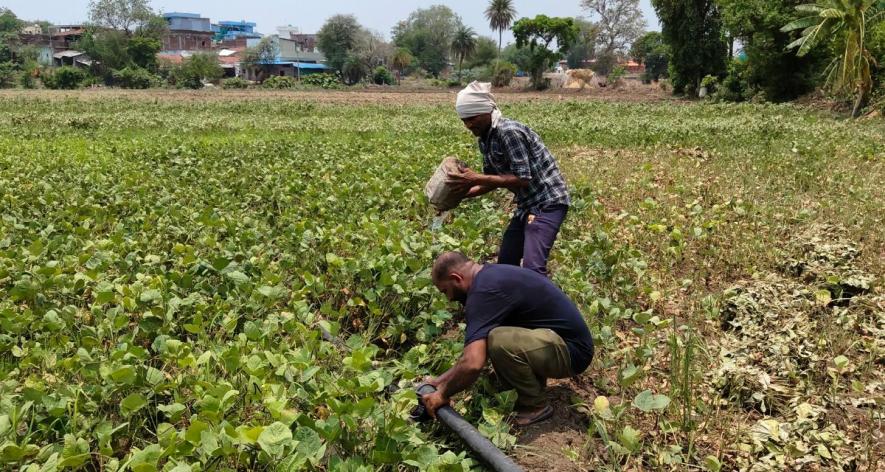
Santosh Gour watering the crops (Photo - Sanavver Shafi, 101Reporters).
Digital divide
The digital divide stands as a major barrier, limiting the reach and effectiveness of hyper-local weather information.
Many farmers, like Kushwaha, do not own smartphones. Even those who do often struggle with the apps. “I have a smartphone, but it’s difficult to operate apps and understand the technical language,” said Shyamlal (38), a farmer from Ganjbasoda.
While the Annual Status of Education Report (ASER) 2023 estimates that about 67.2% of the rural population owns smartphones, access doesn’t always translate into meaningful use—especially when digital literacy is low and internet connectivity is patchy.
Platform usability and language are additional hurdles. On the Gram Manchitra platform, Shyamlal often finds weather data listed as “undefined,” and most of the information appears only in English, with no option for translation. Even when forecasts are offered in Hindi on the e-Gram Swaraj website, the terminology can be difficult to grasp.
Phrases like “badal ka avaran” (cloud cover), “saapekshik aadtrata” (relative humidity), and “megh avaran” (another term for cloud cover) are commonly used, but they’re unfamiliar to many farmers, making it harder to interpret the updates.
Jagdish Meena, a farmer from Eintkhedi (Jagdishpur), finds the e-Gram Swaraj app “too technical”. “It’s not in a format we can easily understand,” he said. He suggested that simpler language and a more intuitive design could help make it user friendly for its target audience.
Hits and misses
These barriers to using the app have real consequences on the ground.
In Abgaon Khurd village of Harda district, a hailstorm on May 10 wiped out standing moong crops. “If we had known earlier, we could have covered the crop or harvested it early,” said farmer Sunil Golya. In Khandwa, early May rains damaged over 10,000 hectares of moong, highlighting how delays or gaps in access to forecasts leave farmers exposed.
There are, however, instances when the system has worked. In Eintkhedi village, farmer Gajraj Singh Meena said he used rain alerts from the e-Gram Swaraj app to adjust his irrigation. “I reduced the water supply whenever rain was forecast. My neighbours did the same and we were able to save our crops,” he said.
Still, such success stories remain the exception rather than the rule.
“Most farmers don’t even know about these apps. They rely on radio, Doordarshan, or automated phone calls,” said Akhilesh Meena of the Kisan Sangh in Bhopal. He added that there is a need for awareness campaigns and hands-on training to ensure more farmers can effectively use Mission Mausam’s tools.
Farmer leader Vinayak Rajput echoed this, pointing towards a broader infrastructure gap. “We need faster, more reliable internet in rural areas,” he said.
“And the information must be in simple, local language,” added Professor Ashok Kumar Patil of Jawaharlal Nehru Agricultural University, Jabalpur.
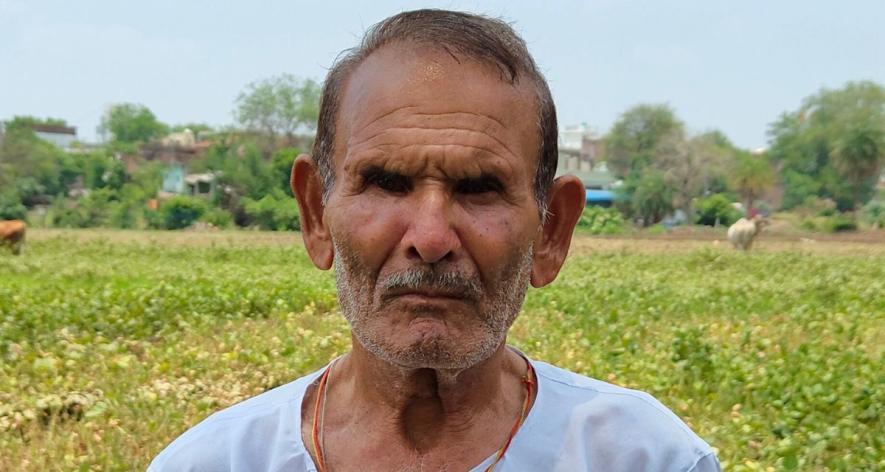
Maharaj Meena at his farm (Photo - Sanavver Shafi, 101Reporters).
Bridging the gap
In addition to this, there is also a lack of local observatories and equipment for accurate forecasting at the village level, Praveen Saxena, scientist at IMD's Nagpur regional centre, said.
“Events like rainfall and storms change quickly, and forecast accuracy drops significantly by the fifth day.”
To address this, under Mission Mausam 3.0, there is a plan to install 18 new Doppler radars, 50 wind profilers, 100 automatic weather stations (AWS) across the country at a cost of Rs 2000 crore. While supercomputers, AI and machine learning techniques are being used. Cloud chambers will be installed at the Indian Institute of Tropical Meteorology (IITM), which will study monsoon clouds.
The mission also aims to improve short- to medium-range forecast accuracy by 5–10%, enhance panchayat-level forecasting, and deliver a 10% improvement in air quality forecasts.
In Madhya Pradesh, one Doppler radar and five AWS units are already functional in Bhopal, with another radar currently being installed in Indore.
Capacity-building also remains a focus area. Around 200 Krishi Mitras and Panchayat Secretaries are undergoing digital training, and the IMD is training at least five farmers in every village to understand and interpret weather data. “These farmers will help others in their villages learn how to check forecasts on their phones and respond in time,” Saxena said.
Sanavver Shafi is a freelance journalist and a member of 101Reporters, a pan-India network of grassroots reporters.
Get the latest reports & analysis with people's perspective on Protests, movements & deep analytical videos, discussions of the current affairs in your Telegram app. Subscribe to NewsClick's Telegram channel & get Real-Time updates on stories, as they get published on our website.












